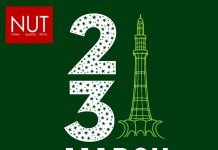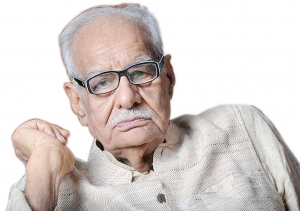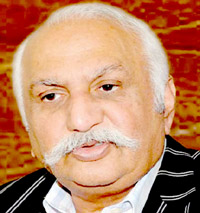When what was presumed to be the invasion of Islamabad by Mehmood of Ghazni-II, the CM of Khyber Pakhtunkhwa, could not surmount the lairs of barricades, the rebel rousers on the streets had to beat a retreat under the heavy smoke of teargas.
The second attempted coup-on-the-streets failed to invite the extra-constitutional intervention they had presumed would happen, or were made to believe so by some unscrupulous elements. The lucky democratic transition survived and rule of law won over the forces of authoritarianism. Its dividends were visible in an unprecedented surge in the stock market.
The sabre-rattlers at the Banigala headquarters of our prototype of Donald Trump had to announce a false victory and submit to arbitration by the apex court they overwhelmingly detested. The court had admitted their petitions two weeks ago – a day before the D-Day that was never to come. Failing to rouse the masses, they had to hide the special-edition of ‘Black Label’ – the criminal conspiracy to break down constitutional order – behind the honey of judicial arbitration. With this the saga of Dharna-II ended with ‘Thanksgiving day’ to hide the shame of their phony revolution.
What a deceitful façade it was to hang the selected corrupt by the electric polls by destroying the whole ethical, democratic and legal edifice of the state. Combining revolutionary sentiments with Daesh-type barbaric justice or Taliban type ideology is nothing but fascism. Had they succeeded in their mutinous designs, who would have taken over? Not our outgoing valiant General Raheel Sharif, at least. Some had wanted him to play Kakar-II, but that was not his cup of tea. Then were the sections of fascist-leaning petite bourgeoisie paving the way for the jihadis-in-waiting, since they neither had a revolutionary agenda nor a revolutionary organisation?
Hopes were built amid the parallel emergence of Memo-gate-II or Dawn-leak-gate, which has brought civil-military relations at a knife’s edge in a crucial phase of a change of guard at the GHQ. Like Dharna-I that had some Bonaparte linkages, and which was frustrated by parliament and a non-Bonapartist General Raheel Sharif, Dharna-II got its wink from Dawn-leak-gate.
Had it been a democratic project, the PTI would have legitimately benefited from the permission granted by the Islamabad High Court. And had it been a genuine effort to make the people named in the Panama leaks accountable, Imran Khan would have first followed up his writ that was admitted 13 days before his call for the shutdown of the capital. If the Dawn story created mischief, Imran Khan’s call for the overthrow of an elected government was nothing but a recipe for disaster.
The second fiasco of dharna putsch or politics of brinkmanship have happened due to various factors – just not the rejection of the erstwhile politics of derailment of democracy by the people at large as enshrined in the Charter of Democracy signed by Mohtrama Benazir Bhutto and Prime Minister Nawaz Sharif after they had learnt their lessons of dissolution of assemblies by rotation in the uncertainty of the 1990s.
People know they have a fair chance to change their representatives within 18 months on the completion of the second-term of a democratic transition; they know why not to jump into the fires of political fiascos. The PTI could have waited and build on the possibilities of winning sizeable seats. But, perhaps, after having reached the last ceiling of its electoral appeal, it wanted first the demolition of the PML-N at the altar of accountability and was encouraged by sponsored rumours of a minus-one formula.
But you cannot build a movement on half-baked conspiracy theories that are unfortunately played on by an irresponsible section of media. The assumptions of possible civil-military tension going out of control were farfetched as the prime minister was well set to use his constitutional prerogative to appoint a new chief of army staff (COAS) and chairman joint chiefs of staff committee (CJCS).
A self-contradictory narrative that opportunistically used civil liberties for its authoritarian design of bringing down a democratic edifice was not sellable to the broader sections of the intelligentsia. The traditional forces of mosques and bazaars were not inclined to bet their fortunes on such an uncertain gamble, and that too against the Sharifs who represent broader sections of the business classes in Punjab.
In the battleground along GT Road, the PML-N is still the most well-entrenched organisation – with a solemn belief in Mian Nawaz Sharif’s leadership. In his politics of expediency and penchant for solo-flight, Imran Khan broke the united opposition on the terms of reference that the PPP and others had painstakingly developed. Because of his incorrigible individualism, he could not bring on board the other more radical and organised dharna segment belonging to the Qadri-led PAT.
On the other hand, the Nawaz Sharif government responded with a very intelligent counter-strategy. The prime minister showed flexibility and courage to face his family members’ and his own trial by the Supreme Court and did not opt to hinder the juridical process on the issues of admissibility. The government showed its clear willingness to allow the public gathering at a prescribed public place.
Learning from the democratic generosity of allowing the previous dharna, it rightly drew the red line of not allowing any disturbance in the capital and was vindicated by the Islamabad and Lahore high courts to uphold rule of law in defence of citizens’ rights and democratic order. It preferred Section 144, light baton charge and pre-emptive arrests, rather than taking a bloody course and causing casualties. With the failure of the PTI, the government has emerged stronger and is now in a better position to handle the Dawn-leak-gate.
By making it well-reputed information minister a scapegoat (which was totally unjust), it has tried to bring down the temperature created by an otherwise unsubstantiated story that has been repeatedly denied. Keeping the controversy going is even more harmful to the image of the country. The trouble is rooted in the lopsidedness and unevenness of civil-military relations – not the Dawn story – which need to be set in a constitutional framework, rather than kept on the lines of the hegemony of the garrison, built during long years of martial regimes.
It is time for the PTI to ponder over its conduct and dangerous tendencies, which border on quasi-fascism. The PTI and its cult leader, a populist Imran Khan, has been a most confusing ideological mixture of barbaric codes and patriarchal ethos, on the one hand, and ultra right-wing Islamic-nationalism. While challenging the forces of the ‘status quo’, which remain undefined, the PTI and Imran Khan play on the widespread frustration of the bulk of our youth by promising ‘insaf’ – again an ambiguous mirage and not defined.
Its populism is extremely ambiguous and reactionary; and the political culture it is promoting is very intolerant and authoritarian. It must clearly redefine its platform to become a democratic alternative by shunning fascist tendencies and preparing for the next electoral battle. Otherwise, it will further lose its grounds and will be instrumental in spoiling yet another young generation.





